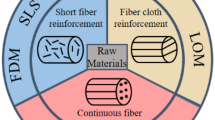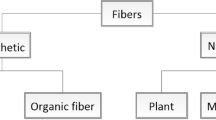Abstract
Composite sandwich structures are widely used in transport and energy applications because of their excellent specific strength and fatigue damage resistance. However, the mechanical properties of the joint area rely on the structural design. This paper proposes a novel carbon fiber-reinforced polymer sandwich joint in the context of a Formula Student monocoque. A stiffener is introduced to connect carbon fiber panels on both sides, and the geometry of the aluminum honeycomb connecting core is adjusted to improve the stress distribution in the joint panels. A finite element model under a three-point bending load is established based on the progressive damage model and the cohesive zone model. The mechanical properties were compared with conventional joints based on Formula Student three-point bending tests. Specimens were fabricated and tested using t700 carbon fiber prepreg and 3003 aluminum honeycombs to verify the joint’s performance and the accuracy of the finite element model. Experimental results showed that the three-point bending strength of the novel joint increased by 52.27%, and the stiffness increased by 101% compared to the conventional design. The simulated strength errors of the novel joint and the conventional joint were 4.66%, and 13.7%, respectively, and the failure modes were consistent with the experimental results, indicating the validity of the finite element model. The novel joint profile is less protruding than the conventional joint and could be widely used for joining or repairing automotive and aircraft components.



















Similar content being viewed by others
Availability of Data and Materials
The data that support the findings of this study are available on request from the first author Yifei Wang. The data are not publicly available due to the studies are related to motorsports competitions, they contain information that may compromise the competitive advantage of the study participants in the competition.
References
Al-Fatlawi, A., J´armai, K., Kov´acs, G.: Optimal design of a fiberreinforced plastic composite sandwich structure for the base plate of aircraft pallets in order to reduce weight. Polymers 13, 834 (2021). https://doi.org/10.3390/polym13050834
KR, S., Anton, J., Spatenka, P., Sourkova, H.J.: Experimental studies on the influence of plasma treatment of polyethylene in carbon fiber composites: Mechanical and morphological studies. Polymers 14, 1095 (2022). https://doi.org/10.3390/polym14061095
Kavimani, V., Gopal, P.M., Sumesh, K.R., & Elanchezhian, R.: Improvement on mechanical and flame retardancy behaviour of bio-exfoliated graphenefilled epoxy/glass fibre composites using compression moulding approach. Polym. Bull. 79, 6289–6307 (2022). https://doi.org/10.1007/s00289-021-03810-x
Kavimani, V., Gopal, P.M., Sumesh, K.R., & Kumar, N.V.: Multi response optimization on machinability of sic waste fillers reinforced polymer matrix composite using taguchi’s coupled grey relational analysis. Silicon 14, 65–73 (2020). https://doi.org/10.1007/s12633-020-00782-x
Khosravani, M.R., Zolfagharian, A., Jennings, M., Reinicke, T.: Structural performance of 3d- printed composites under various loads and environmental conditions. Polym. Test. 91, 106770 (2020). https://doi.org/10.1016/j.polymertesting.2020.106770
Nakagawa, Y., Mori, K.I., Yoshino, M.: Laser-assisted 3d printing of carbon fibre reinforced plastic parts. J. Manuf. Process. 73, 375–384 (2022). https://doi.org/10.1016/j.jmapro.2021.11.025
Amiri Delouei, A., Emamian, A., Sajjadi, H., Atashafrooz, M., Li, Y., Wang, L.P., Jing, D., Xie, G.: A comprehensive review on multi-dimensional heat conduction of multi-layer and composite structures: Analytical solutions. J. Therm. Sci. 30, 1875–1907 (2021). https://doi.org/10.1007/s11630-021-1517-1
Savage, G.: Formula 1 composites engineering. Eng. Fail. Anal. 17, 92–115 (2010). https://doi.org/10.1016/j.engfailanal.2009.04.014
Barca, I.: Strength calculations of the formula 1car survical cell. Technologia i Automatyzacja Montaz˙u 1, 3–13 (2022). https://doi.org/10.7862/tiam.2022.1.1
Kupski, J., de Freitas, S. T.: Design of adhesively bonded lap joints with laminated cfrp adherends: Review, challenges and new opportunities for aerospace structures. Compos. Struct. 268, 113923 (2021). https://doi.org/10.1016/j.compstruct.2021.113923
Zhang, H., Zhang, L., Liu, Z., Zhu, P.: Research in failure behaviors of hybrid single lap aluminum-cfrp (plain woven) joints. Thin-Walled Struct. 161, 107488 (2021). https://doi.org/10.1016/j.tws.2021.107488
Qi, G., Chen, Y.-L., Richert, P., Ma, L., Schroeder, K.-U.: A hybrid joining insert for sandwich panels with pyramidal lattice truss cores. Compos. Struct. 241, 112123 (2020). https://doi.org/10.1016/j.compstruct.2020.112123
Heslehurst, R.B.: Design and analysis of structural joints with composite materials. DEStech Publications Inc, Lancaster (2013)
Khosravani, M.R.: Influences of defects on the performance of adhesively bonded sandwich joints. Key Eng. Mater. 789, 45–50 (2018). https://doi.org/10.4028/www.scientific.net/KEM.789.45
Baek, S.J., Kim, M.S., An, W.J., Choi, J.H.: Defect detection of composite adhesive joints using electrical resistance method. Compos. Struct. 220, 179–184 (2019). https://doi.org/10.1016/j.compstruct.2019.03.081
Li, G., Lee-Sullivan, P., Thring, R.W.: Nonlinear finite element analysis of stress and strain distributions across the adhesive thickness in composite single-lap joints. Compos. Struct. 46, 395–403 (1999). https://doi.org/10.1016/S0263-8223(99)00106-3
Adams, R.D.: Strength predictions for lap joints, especially with composite adherends. a review. J. Adhes. 30, 219–242 (1989). https://doi.org/10.1080/00218468908048207
Zeng, Q.-G., Sun, C.: Novel design of a bonded lap joint. AIAA J. 39, 1991–1996 (2001). https://doi.org/10.2514/2.1191
Xiaoquan, C., Baig, Y., Renwei, H., Yujian, G., Jikui, Z.: Study of tensile failure mechanisms in scarf repaired cfrp laminates. Int. J. Adhes. Adhes. 41, 177–185 (2013). https://doi.org/10.1016/j.ijadhadh.2012.10.015
Zeng, H., Yan, R., Xu, L.: Failure prediction of composite sandwich l-joint under bending. Compos. Struct. 197, 54–62 (2018). https://doi.org/10.1016/j.compstruct.2018.05.022
Toftegaard, H., Lystrup, A.: Design and test of lightweight sandwich t-joint for naval ships. Compos. A Appl. Sci. Manuf. 36, 1055–1065 (2005). https://doi.org/10.1016/j.compositesa.2004.10.031
Toubia, E.A., Elmushyakhi, A.: Influence of core joints in sandwich composites under in-plane static and fatigue loads. Mater. Des. 131, 102–111 (2017). https://doi.org/10.1016/j.matdes.2017.06.009
Tak´acs, L., Szab´o, F.: Ian effective method of modeling the deformation behavior of polymer sandwich structures with adhesive joints. Appl. Compos. Mater. 28, 1959–1978 (2021). https://doi.org/10.1007/s10443-021-09948-1
Standardization, E.: Space engineering: Adhesive bonding handbook, ed. ecfs standardization. vol. Tech. Rep., ECSS-E-HB-32–21A (2011)
Garrido, M., Correia, J.R., Keller, T., Branco, F.A.: Adhesively bonded connections between composite sandwich floor panels for building rehabilitation. Compos. Struct. 134, 255–268 (2015). https://doi.org/10.1016/j.compstruct.2015.08.080
Cen, B., et al.: Mechanical behavior of novel gfrp foam sandwich adhesive joints. Compos. B Eng. 130, 1–10 (2017). https://doi.org/10.1016/j.compositesb.2017.07.034
Ghazali, E., Dano, M.-L., Gakwaya, A., Amyot, C.-O.: Experimental and numerical studies of stepped-scarf circular repairs in composite sandwich panels. Int. J. Adhes. Adhes. 82, 41–49 (2018). https://doi.org/10.1016/j.ijadhadh.2017.12.008
Xu, L., Kharghani, N., Li, M., Soares, C.G.: Design improvement of a composite-to-steel butt-joint based on finite element analysis. Ocean Eng. 238, 109771 (2021). https://doi.org/10.1016/j.oceaneng.2021.109771
Masters, I., Evans, K.: Models for the elastic deformation of honeycombs. Compos. Struct. 35, 403–422 (1996). https://doi.org/10.1016/S0263-8223(96)00054-2
Li, Z., Wang, D., Kang, Q.: The development of data acquisition system of formula sae race car based on can bus communication interface and closed-loop design of racing car. Wirel. Commun. Mob. Comput. 2021, 18 (2021). https://doi.org/10.1155/2021/4211010
Stewart, R.: New mould technologies and tooling materials promise advances for composites. Reinf. Plast. 54, 30–36 (2010). https://doi.org/10.1016/S0034-3617(10)70110-7
Castani´e, B., Bouvet, C., Ginot, M.: Review of composite sandwich structure in aeronautic applications. Compos. C Open Access 1, 100004 (2020). https://doi.org/10.1016/j.jcomc.2020.100004
Sratong-on, P.: Structural design of a full-body composite monocoque chassis based on the type of carbon fiber fabrics. Tech. Rep., SAE Technical Paper (2022).
Shams, S.S., El-Hajjar, R.F.: Overlay patch repair of scratch damage in carbon fiber/epoxy laminated composites. Compos. A 49, 148–156 (2013). https://doi.org/10.1016/j.compositesa.2013.03.005
Sun, L., Tie, Y., Hou, Y., Lu, X., Li, C.: Prediction of failure behavior of adhesively bonded cfrp scarf joints using a cohesive zone model. Eng. Fract. Mech. 228, 106897 (2020). https://doi.org/10.1016/j.engfracmech.2020.106897
Feldhusen, J., Warkotsch, C., Kempf, A.: Development of a mechanical technology for joining sandwich elements. J. Sandwich Struct. Mater. 11, 471–486 (2009). https://doi.org/10.1177/1099636209105378
Haugum, H., Pløen, M.: Dimensjonering, analyse og testing av inserts i karbonfiber kompositt sandwich chassis. Master’s thesis, Institutt for produktutvikling og materialer (2014).
Anandan, S., Dhaliwal, G., Ganguly, S., Chandrashekhara, K.: Investigation of sandwich composite failure under three-point bending: Simulation and experimental validation. J. Sandwich Struct. Mater. 22, 1838–1858 (2020). https://doi.org/10.1177/1099636218791162
Zhang, H., Zhang, L., Liu, Z., Zhu, P.: Research in failure behaviors of hybrid single lap aluminum-cfrp (plain woven) joints. Thin-Walled Struct. 161, 107488 (2021). https://doi.org/10.1016/j.tws.2021.107488
Hashin, Z.: Failure criteria for unidirectional fiber composites. J. Appl. Mech. 48, 846–852 (1981). https://doi.org/10.1115/1.3157744
Ridha, M., Tan, V.B.C., Tay, T.E.: Traction–separation laws for progressive failure of bonded scarf repair of composite panel. Compos. Struct. 93, 1239– 1245 (2011). https://doi.org/10.1016/j.compstruct.2010.10.015
Xiao, Y., et al.: The bending responses of sandwich panels with aluminium honeycomb core and cfrp skins used in electric vehicle body. Adv. Mater. Sci. Eng. 2018, 1838–1858 (2020). https://doi.org/10.1155/2018/5750607
Author information
Authors and Affiliations
Corresponding author
Additional information
Publisher's Note
Springer Nature remains neutral with regard to jurisdictional claims in published maps and institutional affiliations.
Appendix A
Appendix A
1.1 Mesh size sensitivity analysis
The SC8R shell element forms the skin of sandwich structures and joints. In order to study the influence of the mesh size on the simulation results in this model, the load–displacement curves of the three-point bending simulation were calculated when the mesh size changed from 0.5 mm to 2 mm, and the simulation time used was recorded, respectively. As can be seen from Fig. 20, when the cell size is 0.5 mm and 1 mm, the load–displacement curve is consistent with the experimental results, and the simulation results tend to converge. 1 mm mesh size can take into consideration both the requirements of calculation accuracy and calculation speed. With the increase of mesh size, the error of simulation results increases; when the mesh size is 2 mm, the results are not available.
Rights and permissions
Springer Nature or its licensor (e.g. a society or other partner) holds exclusive rights to this article under a publishing agreement with the author(s) or other rightsholder(s); author self-archiving of the accepted manuscript version of this article is solely governed by the terms of such publishing agreement and applicable law.
About this article
Cite this article
Wang, Y., Wang, F., Xu, Q. et al. Design and Analysis of a Novel Carbon Fiber Reinforced Polymer Sandwich Adhesive Joint. Appl Compos Mater 30, 791–813 (2023). https://doi.org/10.1007/s10443-023-10113-z
Received:
Accepted:
Published:
Issue Date:
DOI: https://doi.org/10.1007/s10443-023-10113-z





